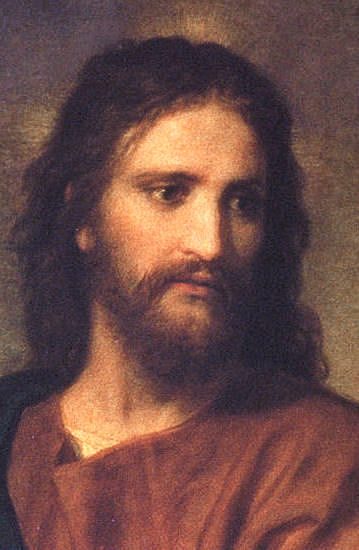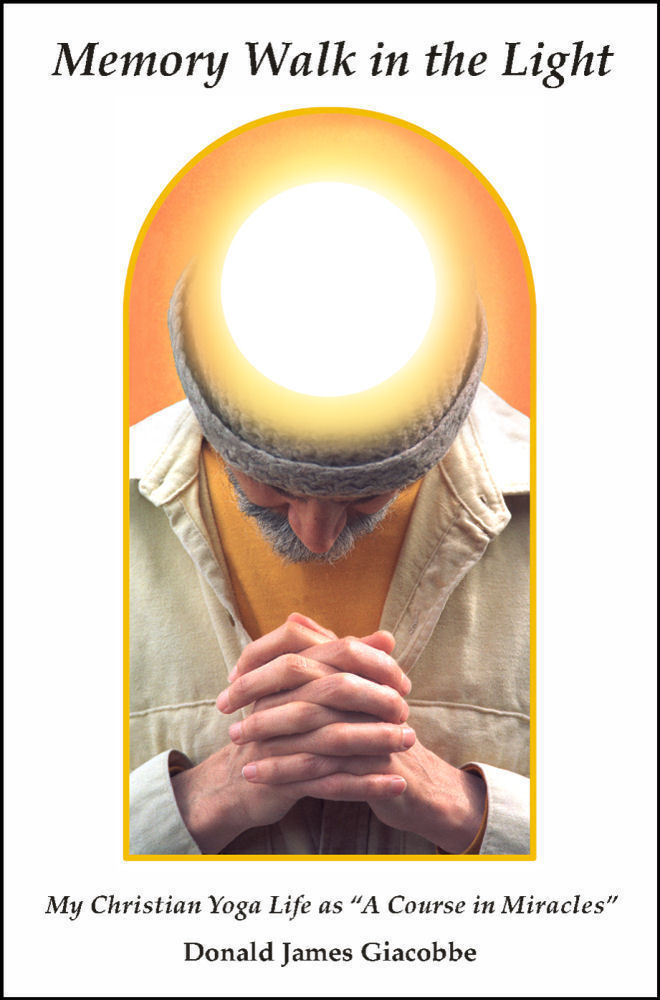WHAT IS CHRISTIAN YOGA?
Traditional
yoga has four different paths to accommodate the psychological
temperaments of
various seekers. There
are basically
four different psychological tendencies. Each
person has an active nature, an emotional nature, an intellectual
nature, and a contemplative nature. Although
every person has all four natures, usually one of these will be
the predominant temperament of the individual.
Each
of the four paths of yoga emphasizes one
of these four temperaments.
According to classical yoga from India, seekers who are predominately active by nature are drawn to the path of Karma Yoga, the path of selfless action. Individuals who have an emotional temperament are suited to Bhakti Yoga, the path of love. Individuals who are intellectually oriented are suited to Jnana Yoga, the path of discernment. Individuals who have a contemplative inclination are attracted to Raja Yoga, the path of meditation.
Also, there is one more
type of yoga. This
fifth path is Relationship Yoga,
which focuses on forgiveness, and is not part of traditional yoga. Any
one of these paths can
be practiced individually, and traditionally Hindu seekers of India
were encouraged to choose just one specific path to find God.
However, the emphasis on this website it to
practice Christian Yoga as a combination of these five
paths into one balanced approach to God so that there is an integration
of
the entire person.
These five categories of Christian Yoga are identified below:
Christian Bhakti Yoga : Love
Christian Karma Yoga : Service
Christian Raja Yoga : Meditation
Christian Jnana Yoga : Understanding
Christian Relationship Yoga : Forgiveness

CHRISTIAN
YOGA IS
FOLLOWING
CHRIST
Just as yoga in
general is an internalization, Christian Yoga is likewise a systematic
internalization, but with an emphasis upon Christ. As a Christian yogi,
your
body is a member of the body of Christ. Christ’s body encompasses the
universe.
His body encompasses form, space, and time. There is nothing that
exists
outside of Christ, just as there is nothing that exists outside of God,
the
only difference being God is the First Cause, who created the Christ.
The
Christian yogi then has a single task—to internalize Christ Himself,
who is the
One in the All.
Within the Christian
yogi then is the cross of Christ in which his ego dies daily. His
breath
inhales the love of Christ for him personally and for all of mankind.
In this
inhalation he takes in the words of Christ on the cross, “Father,
forgive them,
for they do not know what they are doing.”(1) He knows these words
are for himself and all his brothers, and he knows a deeper meaning not
expressed,
“Father, forgive them for they do not yet know who they are, as
your holy
children.” His breath exhales the last expiration of the
cross, “Father,
into your hands I commend my Spirit.”(2)
When the yogi
meditates, he sees himself as one of the disciples waiting in the upper
room
for the Holy Spirit to descend unto his crown in parted tongues of fire
to
purify and cleanse him of all that would separate him from oneness.
Christ rose
from the dead indeed in a moment of time for all mankind once and for
all, but
the Christian yogi is not content with an intellectual assent to this
event in
history. His mission is to immerse himself in the fire of God so the
ego may be
burnt to ashes, and he may rise from the dead also. But it will not be
the yogi
rising from the dead. The Christian yogis realization is that it will
be the
Christ that is resurrecting again within him in the eternal present
moment.
In the awakening of Christ comes the awareness of your own Self as the Christ Self. But equally important is that expanded awareness of oneness brings with it the realization that others are participating with you in the one Christ. Consequently, you can see your true Self in your brothers and sisters. Along with any true realization comes compassion and gratitude. Out of this gratitude comes a dedication to helping to bring about the liberation and happiness of all conscious beings. Christian yogis become teachers of this goal of extending to others, just as Buddhists become teachers to embrace the identical goal, called the bodhisattva ideal. Thus what begins as a Christian Yoga internalization ends as a Christian Yoga externalization. Being a teacher does not necessarily mean calling yourself a teacher. You teach others simply by your example, and sometimes more effectively than if you did call yourself a teacher.
Walking the path of Christian Yoga would ideally include a balanced practice of Christian Bhakti Yoga (love), Christian Karma Yoga (service), Christian Raja Yoga (meditation), Christian Jnana Yoga (understanding), and Christian Relationship Yoga (forgiveness). If you accept Christian Yoga as your path, you have a wonderful example to follow—Jesus. His life reflected a balance of dedicated action, devotion, knowledge, meditation, and forgiveness. Jesus will take you by the hand, like a father takes the hand of his son, and walk with you along the path. Remember that you are never searching alone. You are always joined in this search with your brothers and sisters since finding the divine within is the longing of every human heart either consciously or unconsciously. This collaborative adventure is part of a divine Plan of evolving spiritual consciousness. Jesus is in charge of this Plan, so be sure to hold His Hand. Every step toward the Light, no matter how seemingly small, contributes to the overall spiritual growth of all conscious beings.
A PERSONAL DESCRIPTION
OF CHRISTIAN
YOGA
Until Eastern spiritual practices came into my life, I believed spirituality was something limited to Sunday mornings. Other than a Christian prayer at night, the rest of every day was spent in the non-spiritual activities that fill up daily living. Yoga can be just a set of postures and breathing practices that fills up the exercise category of life. But a deeper understanding of yoga reveals that life is not merely a collection of categories, with spirituality as simply one of them. Yoga teaches spirituality as a way of life that encompasses all daily activities.
I was
personally moved by
the following Bible quotation, which I took quite literally:
- Behold, I stand at the door and knock; if any one hears my voice and opens the door, I will come in to him and eat with him, and he with me. He who conquers, I will grant him to sit with me on my throne, as I myself conquered and sat down with my Father on his throne.(3)
I felt
Jesus was speaking
directly to me in these words, asking me to open the door to Him. What
is it
about yoga that helped me then and helps me now to open the door to
Christ that
traditional Christianity does not? The key connection for me is the
idea that
yoga helps me to explore the presence of Christ within my physical
body. In the
West, Christ is apart from me, and I am worshipping someone, something
outside
myself. The East says Christ is within and can be experienced there as
my own
true nature. This difference is not just theoretical; it is practical. Hatha yoga, the yoga of the physical
body, provides a practical framework for going within the body as an
avenue for
this direct experience. Hatha yoga disciplines consisting of postures
and
breathing practices help me to calm the mind and open the door to
Christ better
than an entirely Western approach, which leaves out an emphasis on the
body.
Yet hatha yoga is only a good beginning—part of a comprehensive
framework that
yoga provides for encountering Christ. This larger framework includes
Christian Karma
Yoga (service), Christian Bhakti Yoga (love and devotion), Christian Jnana Yoga (spiritual
discernment and understanding),
and Christian Raja Yoga (meditation). The combination of these
forms of
yoga helps me to work on my Christ connection in all the areas of my
life, in
contrast to the emphasis in traditional Christianity on spirituality
for the
limited time of Sunday worship. [Later when I learned the importance of
forgiveness, I added Christian Relationship Yoga to my spiritual practice. Christian Bhakti
Yoga focuses on love, but emphasizes devotion to God. Christian Relationship Yoga
also includes love, yet is about loving that expresses forgiveness for
everyone, including forgiving myself.]
In particular, I found the meditative aspect of Christian Raja Yoga was the most helpful in fostering my inner exploration of Christ, providing a systematic structure for my spiritual life. I found yoga was a scientific means of opening the door to Christ—scientific in the sense of providing a structure that could be repeated by anyone and produce similar results each time. Yoga showed me that there was not just one door to Christ; there were seven inner doors called chakras, literally meaning “wheels” of energy and consciousness. A method called “Christian Yoga Meditation” helps to open all seven inner doors to Christ, and this will be described in Chapter 63, “Jacob’s Ladder.” In the West, connection with Christ is all about faith that does not require a direct “felt” experience to confirm this faith. I certainly feel faith is essential, but felt it was also necessary for me to have direct experiences of Christ. Yoga promises this direct experience, and after practicing it, I found that it delivered on this promise. Feeling the presence of Christ within is the nourishment that I needed to keep my focus on living a life devoted to God.
When I practiced these proven methods, I found that Christ did indeed come into my life through my invitation and daily renewal of that invitation. My Catholic upbringing had shown me the value of communion in Sunday service, but yoga, literally meaning “union,” taught me how to find daily communion with Christ within—both in meditation and throughout the day. It was this intimacy with the divine presence that I found fulfilling and strengthening. In my vision of Christian Yoga, I thought of my inner communion as not only walking in the light of Christ, but also as an opportunity to let that light shine outwardly. Thus inner communion led to becoming a spiritual vehicle bringing blessings to others and nourishing a sense of outer communion with my brothers and sisters.
1. Luke
23:34
2. Luke
23:46
3. Revelation 3:20-21
Click below
for individual aspects of Christian Yoga:
Christian Bhakti Yoga : Love
Christian Karma Yoga : Service
Christian Raja Yoga : Meditation
Christian Jnana Yoga : Understanding

The
excerpt above is from the autobiography Memory Walk in the
Light: My
Christian Yoga Life as "A Course in Miracles" by Donald
James
Giacobbe. Below is the author's description of this book:
My life is an example of following in
the
footsteps of Jesus, while practicing yoga disciplines and applying the
principles of A
Course in Miracles. I am a “monk in the world,” not a
father
with children. Yet, as every father, I would like to leave behind an
inheritance. This autobiography is my inheritance, but it is simply a
reminder
of our Father’s inheritance—His
gift of Himself—to
all of His children. The
only gold in this inheritance is the message of love and forgiveness
that God
wants me to hear, to live, and to share with you. I hope that you are
entertained by my life story of blending the East and West. However,
providing
entertainment is not my goal. My purpose is to encourage you to
increasingly awaken
to the spiritual dimension of your own life. Consequently, this book
includes
how-to appendices on Christian meditation, exercise, and yoga postures,
which
can be practiced by anyone to grow spiritually. The goal is to let your
spiritual practice become a way of life firmly centered in Christ. With
this
goal your spiritual practice starts out as an effort, becomes a
necessity, and
eventually becomes a delight, bringing many blessings.
Click for this autobiography at Amazon.com
Click for "Contact Us"© 2011 Miracle Yoga Services. All rights reserved.
